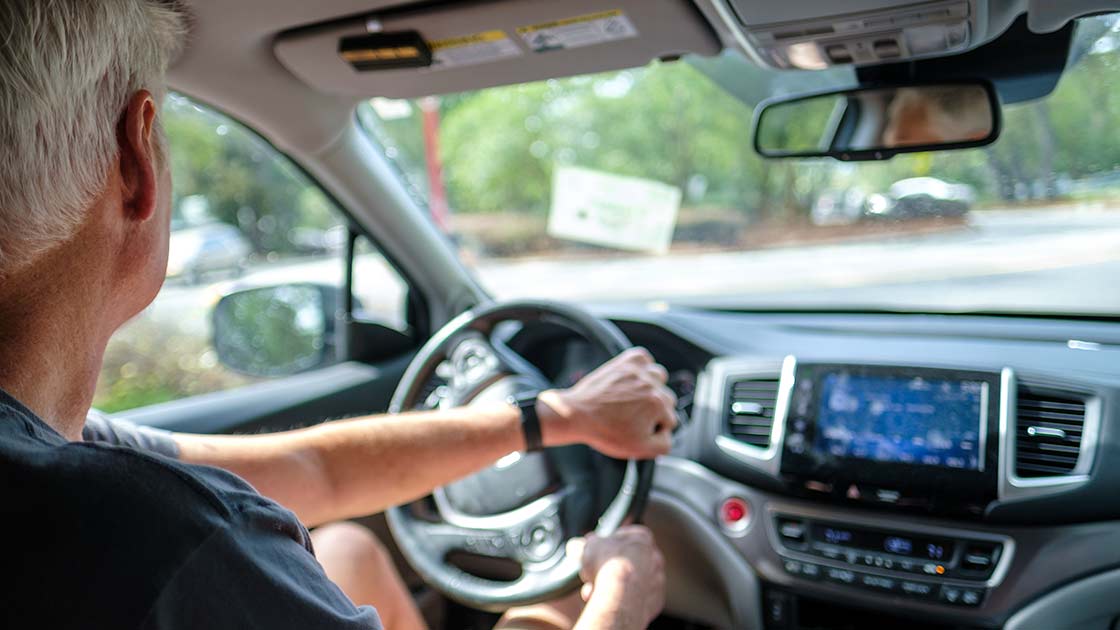Intersection assistance tech shows big promise for older drivers
June 16, 2022

Advanced technologies designed to help drivers navigate intersections could address a third of the crashes that cause older driver injuries and fatalities, a new study from the Insurance Institute for Highway Safety shows.
“Left turn assist and other, upcoming intersection-assistance technologies could deliver big safety benefits for drivers in their 70s and 80s,” says the paper’s author, IIHS Research Associate Aimee Cox.
The number of older drivers in the U.S. is growing rapidly because Americans are living longer and retaining their licenses later in life. That raises safety concerns, as drivers in their 70s and 80s are at a greater risk of certain types of crashes and more prone to severe injuries and fatalities than younger people. Age-related declines in their vision and cognitive abilities make left-turn crashes more common, for example.
To gain a better understanding of how available and upcoming crash avoidance features might help, IIHS researchers used federal crash data from 2016-19 to compare the types of crashes that are most common for older drivers and their middle-aged counterparts. They then estimated how many police-reported crashes, driver injuries and driver fatalities could be addressed by five existing features as well as two others that aren’t yet available. The latter features depend on vehicle-to-vehicle connectivity that allows vehicles to share information about their location, speed and intended path, and that is not currently widespread.
All the features could deliver substantial gains. Overall, about 60 percent of the crashes involving either age group could potentially be addressed by at least one of the safety features covered in the study. More common ones like automatic emergency breaking (AEB) and lane departure prevention were relevant to a large portion of crashes for both sets of drivers. However, such conventional features applied to more crashes of middle-aged drivers than crashes of drivers in their 70s and older.
Intersection-assistance features, which are newer and less well known, could offer older drivers more help, the data showed. Such features were potentially relevant to 32 percent of older driver crash involvements, 38 percent of older driver injuries and 31 percent of older driver fatalities. They could also have big safety benefits for middle-aged drivers, as they were relevant to more than a fifth of all crashes for that age group.
“These results should spur efforts to roll these technologies out to consumers as rapidly as possible,” says Jessica Cicchino, IIHS vice president of research.
Most consumers already know several of the features that the researchers examined. Brighter headlights and related improvements allow the driver to identify hazards sooner. Front crash prevention warns the driver or applies the brakes to avoid an impending collision. Lane departure prevention returns the vehicle back to the proper path when it’s veering out of the travel lane. Blind spot detection warns the driver about vehicles that aren’t visible in the side or rearview mirrors.
Left turn assist and other upcoming intersection-assistance features are probably less familiar. Left turn assist uses a camera and other sensors to detect oncoming vehicles when the driver signals a left turn, warning against proceeding if the software determines a collision is likely.
Vehicle-to-vehicle connectivity, which is still on the horizon, would enable similar, more sophisticated features.
If the vision of its designers comes to fruition, it would eventually link every vehicle on the road, allowing them to communicate their positions, speed and travel path. Vehicle-to-vehicle-enhanced left turn assist would allow the turning vehicle to know the speed and trajectory of oncoming traffic, even if a hill or obstruction makes it difficult to see.
Another planned feature called intersection movement assist would allow vehicles to warn drivers of possible collisions with others approaching a crossroads from multiple directions at various speeds and with different intentions.
For middle-aged drivers, the data showed that intersection-assistance technologies as a group could be relevant to some 650,000 crashes per year as well as more driver injuries than any of the other features covered in the study. However, intersection-assistance features would be relevant to far fewer middle-aged driver fatalities than lane departure prevention — which is designed to address run-off-road, sideswipe and head-on crashes.